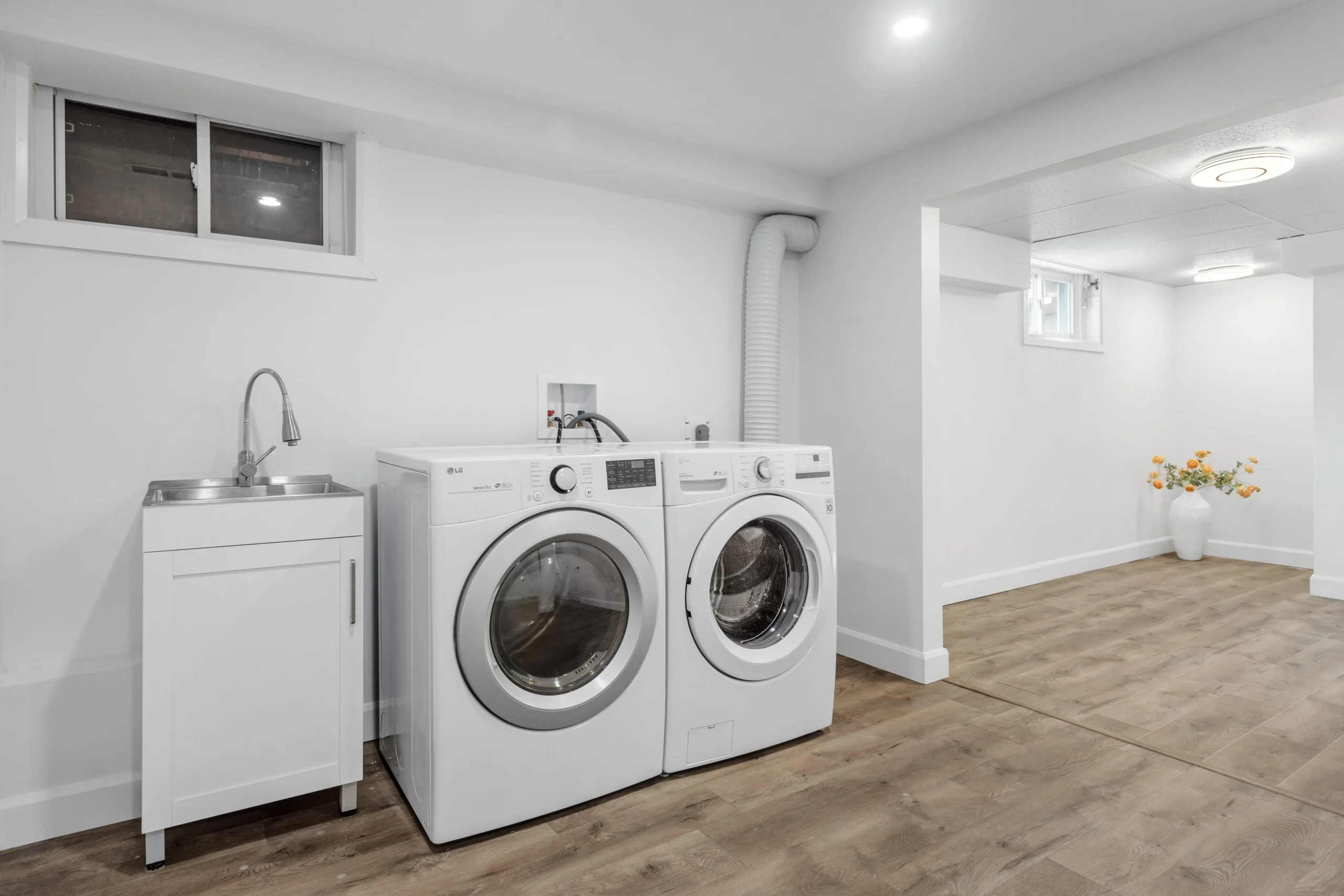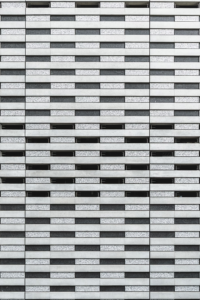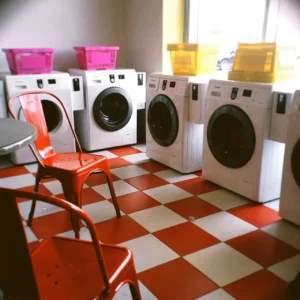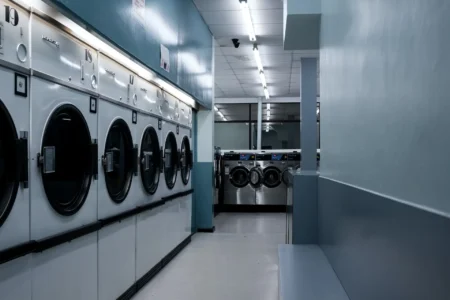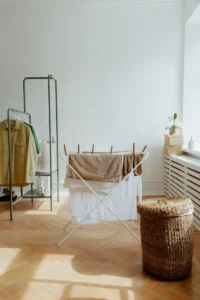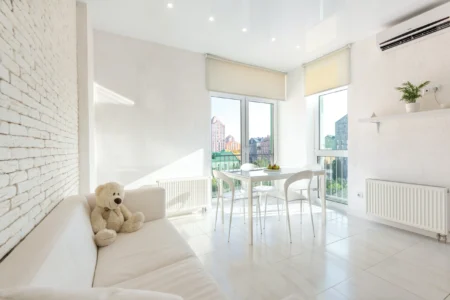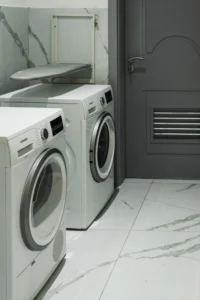In the world of interior design, the laundry room often flies under the radar. Yet, this small, often-overlooked space offers a unique opportunity to showcase your style and creativity. One of the questions that frequently comes up when discussing laundry room makeovers is, “Can you put tile in the laundry room?” The answer is an emphatic, “Yes!” Not only is it possible, but it can also transform your laundry room into a stylish and functional space.
Why Tile is a Great Choice for Your Laundry Room
- Durability and Maintenance: One of the primary reasons why tile makes an excellent choice for laundry rooms is its durability and ease of maintenance. Unlike wood or carpet, which can warp or stain with moisture and heavy use, tile is able to withstand the high-traffic nature of a laundry room. Plus, it’s easy to clean—simply sweep or mop up any spills or debris.
- Moisture Resistance: Laundry rooms are environments where water and humidity are present on a daily basis. Tiles, especially ceramic or porcelain ones, are highly resistant to water. They can handle spills, splashes from the washing machine, or humidity from the dryer without getting damaged or stained.
- Design Flexibility: Tiles come in a virtually limitless array of colors, sizes, patterns, and materials. Whether you prefer a classic, rustic look or a sleek, modern design, you’ll be able to find tiles that perfectly complement your aesthetic.
Tile Design Ideas for Laundry Rooms
Now that we’ve established the practical reasons for using tile in your laundry room, let’s explore some design ideas that can elevate your space from a purely utilitarian one to something truly special.
- Monochrome Magic: Sticking to a monochrome color scheme can make a small laundry room appear larger. Consider using white or light-colored tiles to give your space a clean, minimalist look.
- Bold Patterns: If you’re looking to make a statement, consider using patterned tiles. Geometric designs, floral motifs, or even a bold, colorful mosaic can transform your laundry room into a visually striking space.
- Combination Flooring: Who says you have to stick to one type of tile? Mixing and matching different tiles can create a unique, customized look. For example, you could use large, square tiles for the main floor area and smaller, rectangular subway tiles for a backsplash behind the sink.
Best Types of Tiles for Laundry Room
When it comes to selecting the best type of tile for your laundry room, there are several factors to consider. Here are some top contenders:
- Porcelain Tiles: Known for their durability and water resistance, porcelain tiles are a great fit for laundry rooms. They are denser and less porous than ceramic tiles, making them better equipped to handle exposure to moisture.
- Ceramic Tiles: While slightly less durable than porcelain, ceramic tiles offer a wide range of styles and designs. They’re an affordable and attractive option that can withstand the demands of a laundry room.
- Vinyl Tiles: If you’re looking for a budget-friendly and comfortable option, vinyl tiles are worth considering. They’re resistant to water and humidity, easy to install, and softer underfoot than porcelain or ceramic tiles.
Top 5 Laundry Room Tiling Options
- White Porcelain Tiles: The classic white porcelain tile is a perennial favorite for good reason. It’s not just about aesthetics, although the clean, crisp look can certainly make your laundry room appear brighter and more spacious. The real benefit is in its practicality. Porcelain tiles are known for their durability and water resistance, making them ideal for a high-traffic area like the laundry room. They’re easy to clean, too. Whether it’s a splash of detergent or a bit of mud from the garden, you can easily wipe it away, leaving your floors looking as pristine as when they were first installed.
- Ceramic Subway Tiles: Subway tiles have been a mainstay in interior design for over a century, and they’re showing no signs of fading away. The simple, rectangular design is both timeless and versatile, fitting into various aesthetics from the traditional to the modern. In the laundry room, ceramic subway tiles can serve as a stylish and functional backsplash, protecting your walls from water and detergent splashes. They’re also available in a wide array of colors, though lighter shades tend to be popular for their ability to reflect light and make the room appear larger.
- Patterned Ceramic Tiles: Who says a laundry room has to be boring? With patterned ceramic tiles, you can add a vibrant splash of color and personality to your space. Whether it’s a traditional Moroccan design, a chic geometric pattern, or a charming floral motif, there’s a patterned tile out there that perfectly captures your unique style. These tiles can serve as a focal point in your laundry room, turning a mundane chore into a visually pleasing experience. Additionally, ceramic tiles are easy to maintain, resisting moisture and stains.
- Wood-Look Vinyl Tiles: If you love the warm, natural look of wood but want the durability and water resistance of tile, wood-look vinyl tiles could be your answer. These tiles mimic the appearance of various wood species, complete with grain patterns and texture, but without the susceptibility to water damage. This makes them perfect for the laundry room, where they can withstand humidity, spills, and frequent use. Plus, vinyl tiles are softer and warmer underfoot than traditional tile materials—a nice bonus when you’re standing to fold laundry.
- Terrazzo Tiles: Terrazzo tiles bring a touch of luxury and uniqueness to your laundry room. Originally a method to repurpose marble scraps in 15th-century Italy, terrazzo has become a design trend in its own right. The colorful chips embedded in the tile create a speckled effect that can hide dirt and stains, while the polished surface is easy to clean and maintain. Terrazzo is also incredibly durable, able to withstand heavy foot traffic and the wear and tear of a busy laundry room.
Conclusion
While the laundry room might not be the first place you think of when considering home renovations, it’s a space that holds plenty of potential. Adding tile flooring or a tiled backsplash can dramatically elevate the look and functionality of your laundry room, transforming it from a purely utilitarian space to a stylish and comfortable part of your home.
Choosing the right tile for your laundry room depends on a variety of factors, from your budget and design preferences to the specific demands of your space. Whether it’s the durability and classic elegance of white porcelain tiles, the vibrant personality of patterned ceramic tiles, or the budget-friendly practicality of vinyl tiles, there’s a tiling option out there that’s perfect for your laundry room.
Remember, the laundry room is a place where you’ll likely spend a significant amount of time each week. It’s worth investing in a design that not only meets your practical needs but also contributes to the overall aesthetic of your home. With the right tile, your laundry room can become a space you actually enjoy spending time in, rather than just a chore hub.
FAQs
Should you tile behind the washer and dryer?
A: Yes, tiling behind the washer and dryer can be a smart move. It provides a clean, finished look to the space and also adds an extra layer of protection against potential water damage or stains from detergent spills. Moreover, tiles are easier to clean than painted walls, which can be particularly beneficial in these high-use, high-moisture areas.
Do I need to waterproof the laundry floor before tiling?
A: While not always necessary, waterproofing the laundry floor before tiling can add an extra layer of protection against potential water damage. This can be especially useful if your laundry room is located on an upper floor or if your appliances are older and more prone to leaks. Always consult with a professional if you’re unsure about this step.
Can a tile go through the wash?
A: This question may be asking whether a tile can be washed, in which case the answer is generally yes. Most tile materials, such as ceramic or porcelain, can be cleaned with warm water and mild detergent. However, if you’re asking whether a tile itself can go through a washing machine, the answer would be no. Tiles are hard and brittle, and putting them in a washing machine could damage both the tile and the appliance.
Do you need to tile behind the washing machine?
A: It’s not strictly necessary to tile behind a washing machine, but it can have several benefits. Tiling can protect the wall from moisture and detergent splashes, and it’s also easier to clean than a painted wall. If you’re going for a cohesive look in your laundry room, tiling behind the washing machine can help achieve that.
Does tile go under appliances?
A: Yes, generally speaking, it’s a good practice to tile under appliances. This provides a uniform surface and ensures that if you ever need to move or replace your appliances, you won’t be left with a gap in your flooring.
Can tiles prevent damp walls?
A: Tiles can help protect your walls from moisture, which can lead to dampness. This is particularly useful in rooms with high humidity, like the laundry room. However, it’s important to note that while tiles can help prevent moisture from penetrating the surface of the wall, they can’t solve underlying moisture issues. If you have persistent dampness in your walls, it’s important to address the root cause.
Is it OK to put floor tile on the wall?
A: Yes, it’s generally fine to put floor tiles on the wall. In fact, many people do this to create a cohesive look in their space. However, keep in mind that floor tiles can be heavier than wall tiles, so you’ll need to ensure that your wall can support the weight. Always consult with a professional if you’re unsure.
